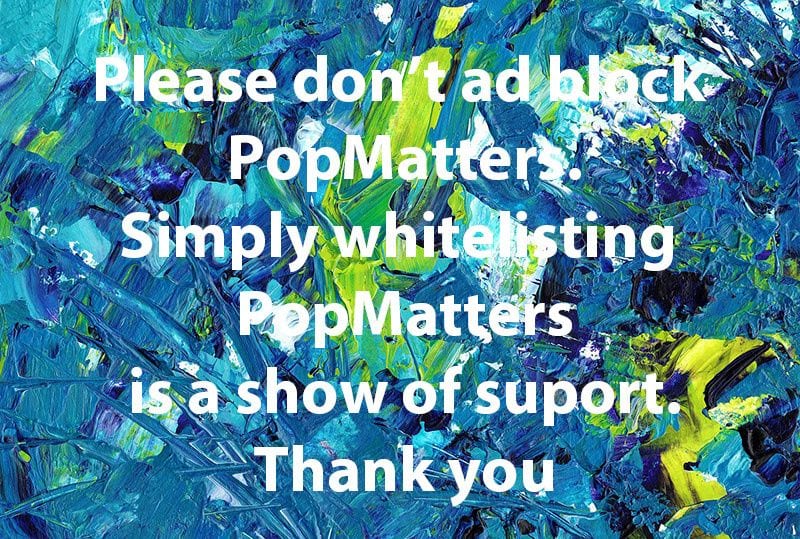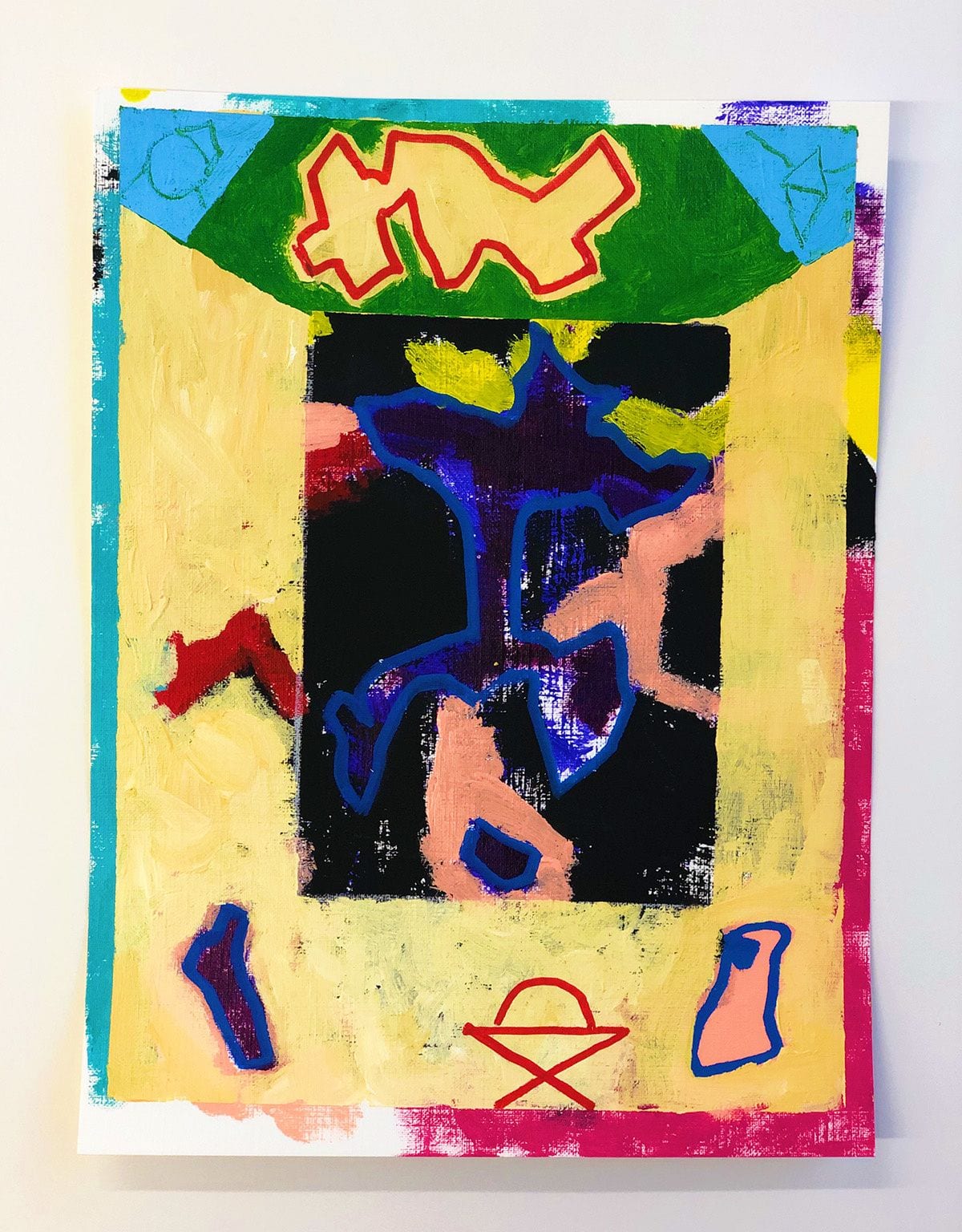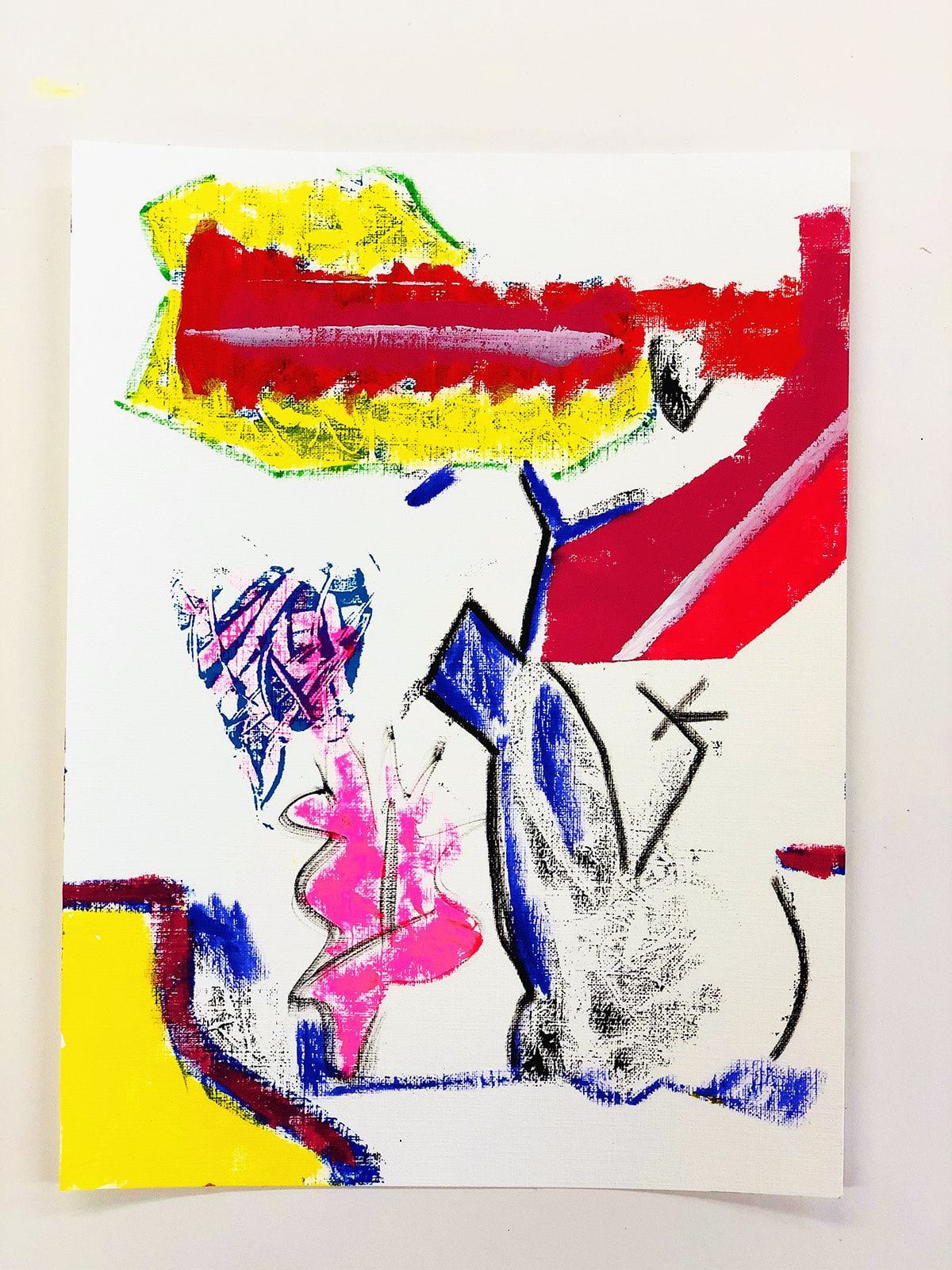
Wayne Koestenbaum is the author of 20 or so books. Some are nonfiction, some are poetry. Some focus on people like Warhol or Groucho, some focus on feelings of humiliation trance. He paints and plays piano. He also teaches at the CUNY Graduate Center. Regardless of genre or medium or even subject, to know this avant-garde artist is to love him—for the intensity of his studies, the nuance of his self-reflections, the exactitude of his articulations.
Koestenbaum’s latest work, Figure It Out, is a collection of 26 meditations on many of his lifelong interests like punctuation, porn, dreams, and celebrity. There are also a good many “assignments” in it, or specific instructions for approaching life more playfully and attentively. He is a relentless interrogator of culture and many things he wrote two or three decades ago still offer fresh astute points. In this interview, we attempted to figure out some things together.
Blue Painting by Mondschwinge (Pixabay License / Pixabay)
To set the scene, I want to begin by asking you to complete one of your own tasks from “Eighteen Lunchtime Assignments”. #16, please (265): “Describe what you’re wearing. Why did you choose these clothes? Which item do you like most? What would you rather be wearing? If you could change one item, which would it be?”
Koestenbaum: I’m wearing red underwear. Blue jeans, very blue, not faded. Grey socks with purple and orange stripes. Blue t-shirt. Red turtleneck sweater. Favorite item: the blue jeans. I haven’t had a pair of blue jeans that I’ve liked in a long time. This pair, rejuvenating, fits but doesn’t constrain. I’d like to exchange my red turtleneck sweater for another red turtleneck sweater—mine is getting pilly and baggy, and I’d like a tighter, unpilly replacement.
In the essay titled “‘My’ Masculinity Remix”, your intention is to “revoke my earlier version [of this essay from 1994] and start the composition all over again” (133). A colleague once told me that I am someone who “refuses to leave anything said alone.” I never quite felt it as the compliment it was intended to be.
Do you struggle to let old essays lie? Common threads of subject across a multitude of projects are one thing, but it seems like there is an esprit d’escalier about your writing sometimes, where the impulse to rework old material is quite direct.
I love the phrase esprit d’escalier. And, yes, I keep returning to my unfinished, flawed, out-of-shape essays (and poems, and stories), and I try to be a reverse Dracula, biting them to make them new: a reverse Dracula, because I don’t want to turn the old essays into undead zombies—I want, instead, to restore the flawed essay’s latently valorous soul, infuse it with a life it might never have had, give it a reason to be giddy, to fly, or to enjoy its landlocked condition. One botched novel I wrote in the late 1990s I kept revisiting, year after year, hoping to prod it into lifelikeness, but the sentences—their inanition—kept rebuking me.
The first thing I thought of when I saw the title of your book was the television show Letterkenny [Crave, CA]. Have you seen it? You’d like it (and the lead character’s name is Wayne). “Figure it out” is one of their common comebacks on the show. They use it to mean “any person with common sense would agree” and often also “so get your shit together.”
But your usage implies the opposite of that: to create the emptily visual figures of asemic writing, to noodle through something without goals or solutions as in the exercises suggested by the title essay.
What were the other titles you considered for this project? Do you think of yourself as good at picking titles? I often dream up titles for books I’ll never write (also, bands I’ll never form). Do you have any similar lists?
I’ve never seen Letterkenny. Thanks for this potential source of joy. By “figure it out,” I meant, in part, “Turn (or return) to the figure, and find in figuration a possible zone of the Out, the liberated, the uncloseted.” As visual artist I bounce between abstract and figurative strategies. And so, despite my embrace of the asemic, I populate my books with bodies, actual bodies: my essays aren’t abstract.
I struggle with finding titles. Usually a title doesn’t arrive until the very end of the project. In contrast, I find titles everywhere—titles for projects I’ll never begin or complete. I’m often telling friends or students—in response to lines from their texts or conversations—”That would make a great title!” I’m usually embarrassed to tell people the titles I’m considering for a work-in-progress.
The original title for my book of poems The Milk of Inquiry was Pubic Loire. The original title for my first book of poems, Ode to Anna Moffo and Other Poems, was Fugitive Blue. The original title of my book Jackie Under My Skin was Virtual Jackie. I like the word “tidbit”, and I’m sure I’ve tried to sneak it into a title many times. How about Hijinks and Tidbits?
Actually, now I remember my poem “The Tidbit School of Adult Entertainment” in Blue Stranger with Mosaic Background. I like the word “cake”, and it would be fun to write poems (or essays) with “cake” in the title. “Approaches to Cake”, “Becoming-cake”, “Cake for Beginners”, “Cake in Yesterday’s Zeitgeist”, “Cake for a New Moon”. “Elocution”, too, deserve to be included in a title.
You repeatedly state in different essays that your work is not prone to argumentativeness because you’re kind of a conflict avoidant person. But isn’t your work seriously invested in persuasion?
Many of your books—on humiliation, on particular celebrities and time periods—dive deeply into examples of a thing for the purpose of defining that thing expansively and exhaustively. You certainly interrogate, even when your outcomes are less than certain. I think this mode of unfolding questions upon questions, this mode of investigation, is the lion’s share of argumentation. The answering isn’t really the thing; it’s the asking, and you’re surely devoted to that.
So why eschew the label of argument? You like to pick a fight but not finish it?
Touché. Yes, I repeatedly announce my allergy to argument, but isn’t argument-avoidance a strong, opinionated way of posing a backwards argument?
So I’ll be more honest, now, and say that I like argument through suggestion, argument through accretion, argument through free-fall, argument through metaphor, argument through juxtaposition, argument through aporia, argument through emphasis, argument through fussiness, argument through detail-mongering, argument through exegesis, argument through magnification, argument through adjective, argument through punctuation, argument through composition.
Wayne Koestenbaum performing at The Kitchen in New York City. (2015) Photo by Alex Lozupone [Wikimedia / CC BY-SA 4.0]
Tell me about the trauma of your unmarketability. You are a musician and a painter who uses poetic or essayistic modes of composition. You write essays and poems that discuss works of art and music. You are interested in fandoms and celebrity culture, yet you are not famous.
Or—are you famous? Would you like to be more famous? To what demographic, or in what genre? Taken all together, your body of work points toward autofiction, but perhaps that’s true of any creative person who makes more than one product or uses more than one medium.
Once you have a fertile idea, how do you know what medium to plant it in? Do you care—worry—about how your products are marketed or how many will sell?
I’ll accept autofiction as my genre. I’ve often circulated the phrase auto-ethnography. Treating oneself as the subject of an anthropological investigation, in the manner of Michel Leiris.
I don’t want to be famous but I want to be remembered. To be remembered persistently, lovingly, fetishistically, investigatively, scrupulously, tenaciously. I want to be internalized by others—by readers. I want there to be a corner—alleyway?—in a reader’s brain, that’s the Wayne corner, maybe not their favorite corner, but a corner that won’t go away, a corner that guides them toward happiness, self-forgiveness, intensified states of energy, and acuity of emotional sight.
That’s what Frank O’Hara, and a thousand others, did for me. That’s what Jonas Mekas does for me today.
“The Task of the Translator” is the most formally mixed text in the book. It’s kind of a 15-page novella, and it’s absolutely describing a short film that I would watch. At the root, it’s a philosophical exploration not so much of the problems of translation itself, but of how the structures and conventions of academic life complicate the task of translation. And it’s a damn good satire. The characters in it are Gavin the translator, Daisy the poet, and—ahem—Wayne the teacher.
How did this hilariously sordid tale germinate?
I love the idea of “The Task of the Translator” as a screenplay! I wrote it for an academic panel on translation. I understood that there would be a certain leeway allowed to the presenters. I took gobs of leeway.
I think the audience was confused. Maybe they were alarmed. Rereading the essay now, when I see the name “Gavin” I think of Gavin Lambert, who wrote Under Daisy Clover, starring Natalie Wood. Gavin was also the name of the director of a kiddie theater troupe I joined in elementary school: San Jose Junior Theater.
A lot of the suggested activities in this book revolve around asemics, or forms without specific semantic content. Some of the essays have an interest in punctuation, lines, and holes. In general, you tend to supersaturate your work with commas or make deliberate use of white space. So we have all these little inklings that somebody like Jackson Pollock might appreciate on one hand, while on the other hand we have your always extremely specific vocabulary and the rigors of your revision labor.
Most people would probably agree that you can somewhat revise a painting. To what extent could or should you revise an asemic work? Or is it impossible to do so, as all subsequent working on an asemic text should ultimately just be construed as added layers of new asemic marking? Is asemic writing somehow the opposite of erasure?
You can revise an asemic work by pushing it toward being semic: sensible, sign-laden. (Sigh-laden?) Thank you for noticing my efforts to “supersaturate” the page with punctuation! That’s my goal. Punctuation grounds me. (In the good sense of “being grounded,” not the punitive sense.)
My trance trilogy—The Pink Trance Notebooks, Camp Marmalade, and a forthcoming third volume—contains patches of asemic writing, or writing that dances between semes so loosely that the result is asemic-tropic. Admittedly, it’s difficult to be asemic in words; to be a writer is to be committed to signs. But we can long, as writers, for what we can’t have—we can long for the far edge of a word, where the word stops being entirely a word, and becomes something visual, concrete, or something suggestive of many words: cake stops being merely cake and becomes Até and lake and ache and CK (Calvin Klein)—or simply becomes the hollow that arises between C and K, the vowel-void yearning between the twin pillars of the C and the K. Try to fall asleep into the word cake—dive into the word and stop insisting that you remember it’s a word—pretend instead that it is a plateau, a mesa, a patio, or just a path you can walk down very slowly, barefoot, near water.
Lighting round of quick questions loosely tied to subjects addressed in this collection!
Who would win in a fight between Adrienne Rich and Eve Kosofsky Sedgwick?
They would be too busy hugging and kvelling and mourning and would forget to fight.
What have you named your piano?
It doesn’t have a name but now I’ll call it The Morseling Machine. Because my fingers deal in morsels, each note a morsel of music, each note a decision, a commitment.
Did you meet John Waters?
Yes, at a Christmas party. Every year he sends me a Christmas card: they are brilliantly corrupting gems, in the Dorian Gray mode, and I treasure them.
Where do you like to read, outside your home?
On trains. In hotel lobbies. At restaurants when I’m eating by myself. Especially breakfast. Cup after cup of hotel tea, and the book unspools or “gives suck.”
How do you like Bruno Fazzolari’s new fragrances?
I love everything Bruno Fazzolari is and does; I remain loyal to his Unsettled, its eerie (déjà vu) reclamation of Guerlain’s L’Heure Bleue.
Why don’t you write about food?
I wrote a short essay called “Chicken with Hoisin Sauce” that was included in an earlier, much longer draft of Figure It Out.
Although Figure It Out talks a lot about asemics and offers a multitude of assignments for doing this kind of writing, none of the writing in this book is an actual example of asemics. Why not include some of that?
And let’s do some now, in any case. I’ll adapt one of the prompts from your “Making Marks” essay (130): Make some marks that criticize your experience of this interview, and then make some other marks that praise it.
I’ve cheated. I didn’t make new marks, but I chose two of my recent paintings-on-paper (9×12 inches), and decided that one painting symbolizes criticism of this interview, and the other painting symbolizes praise. (Maybe these paintings aren’t sufficiently asemic? They lean toward figure and landscape. But their origins were asemic.)
“Critique of Interview” – Wayne Koestenbaum (2020) [Courtesy of Wayne Koestenbaum and Soft Skull Press]
“Praise of Interview” – Wayne Koestenbaum (2020) [Courtesy of Wayne Koestenbaum and Soft Skull Press]






![Call for Papers: All Things Reconsidered [MUSIC] May-August 2024](https://www.popmatters.com/wp-content/uploads/2024/04/all-things-reconsidered-call-music-may-2024-720x380.jpg)



